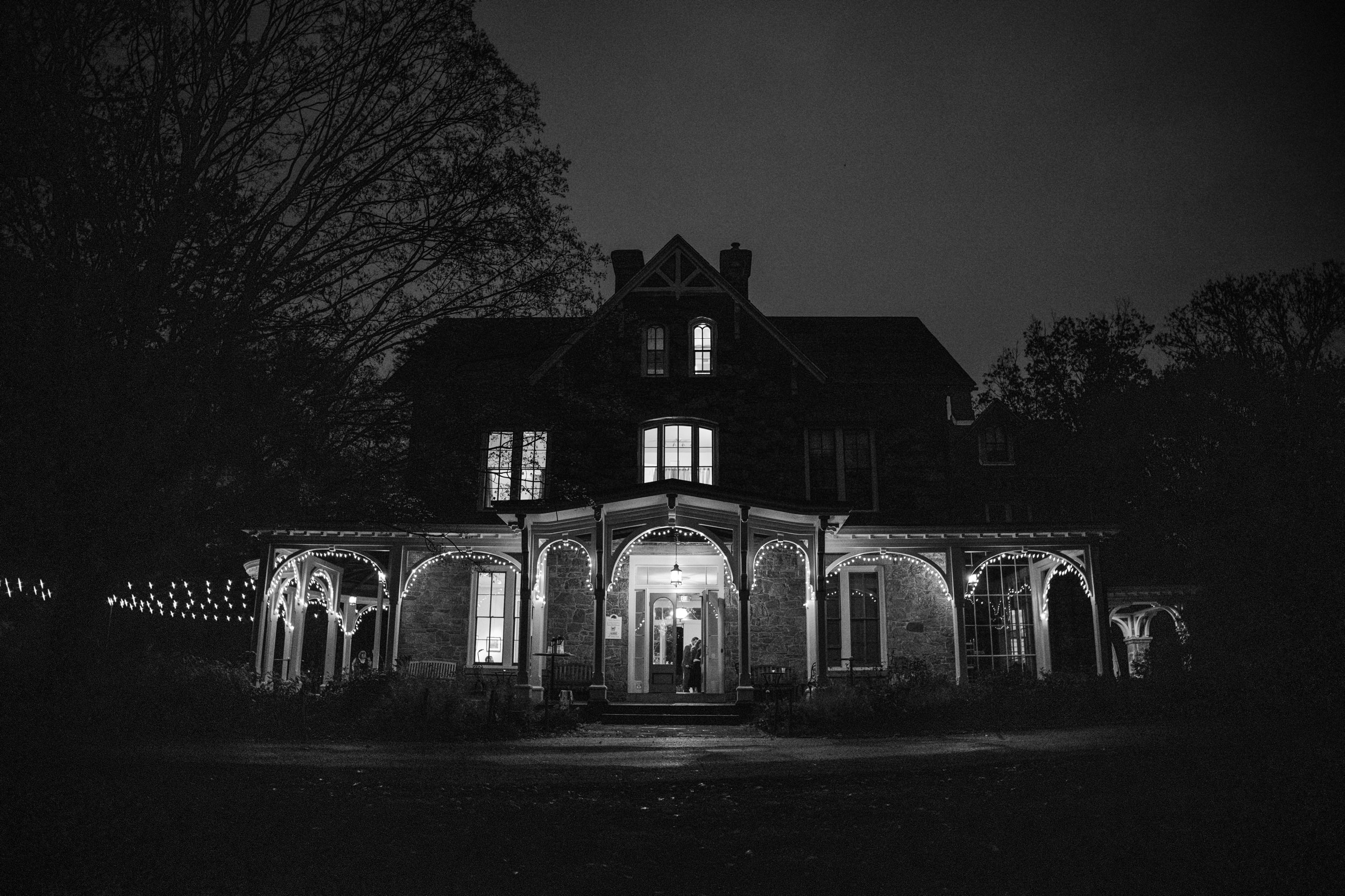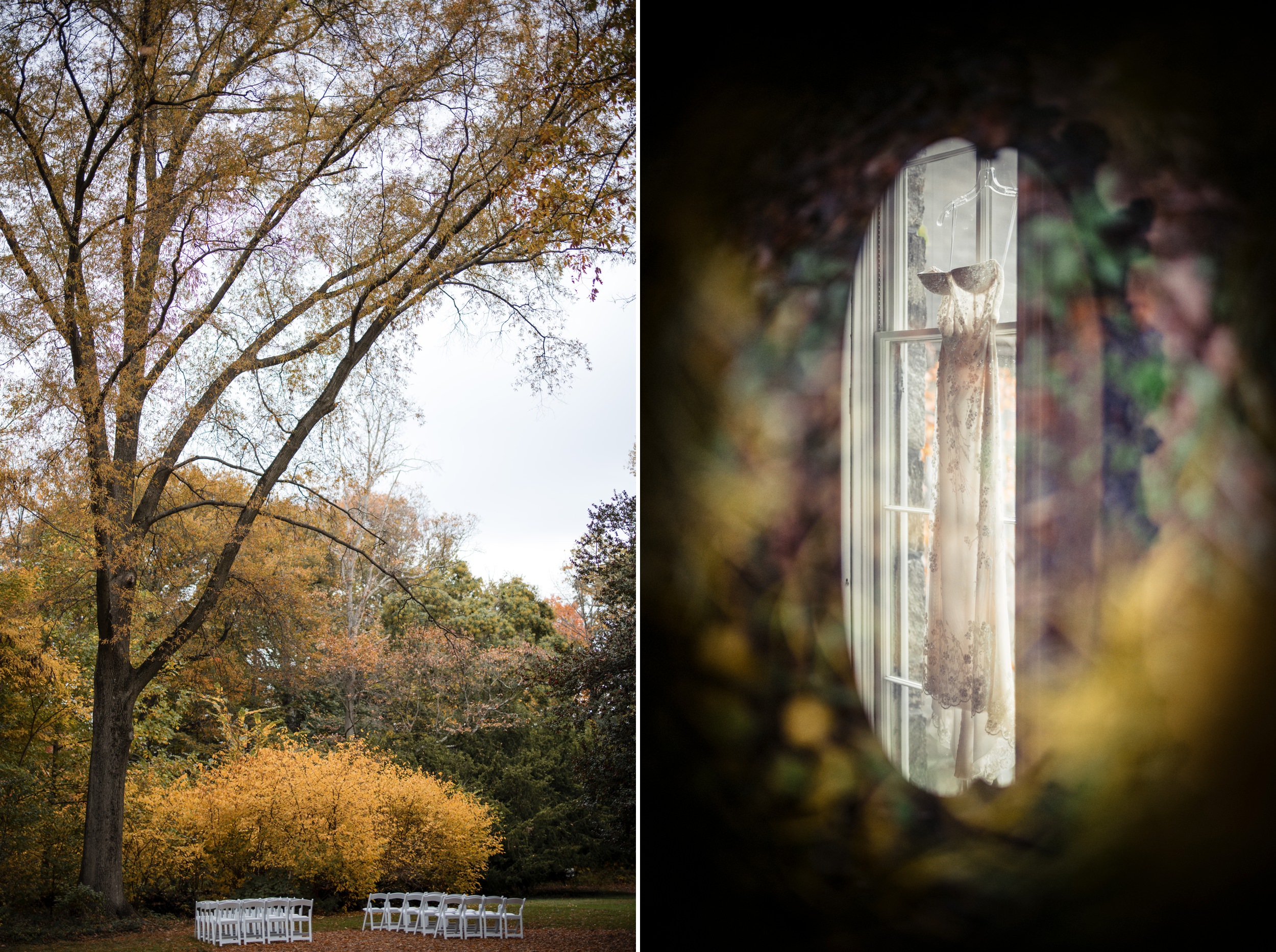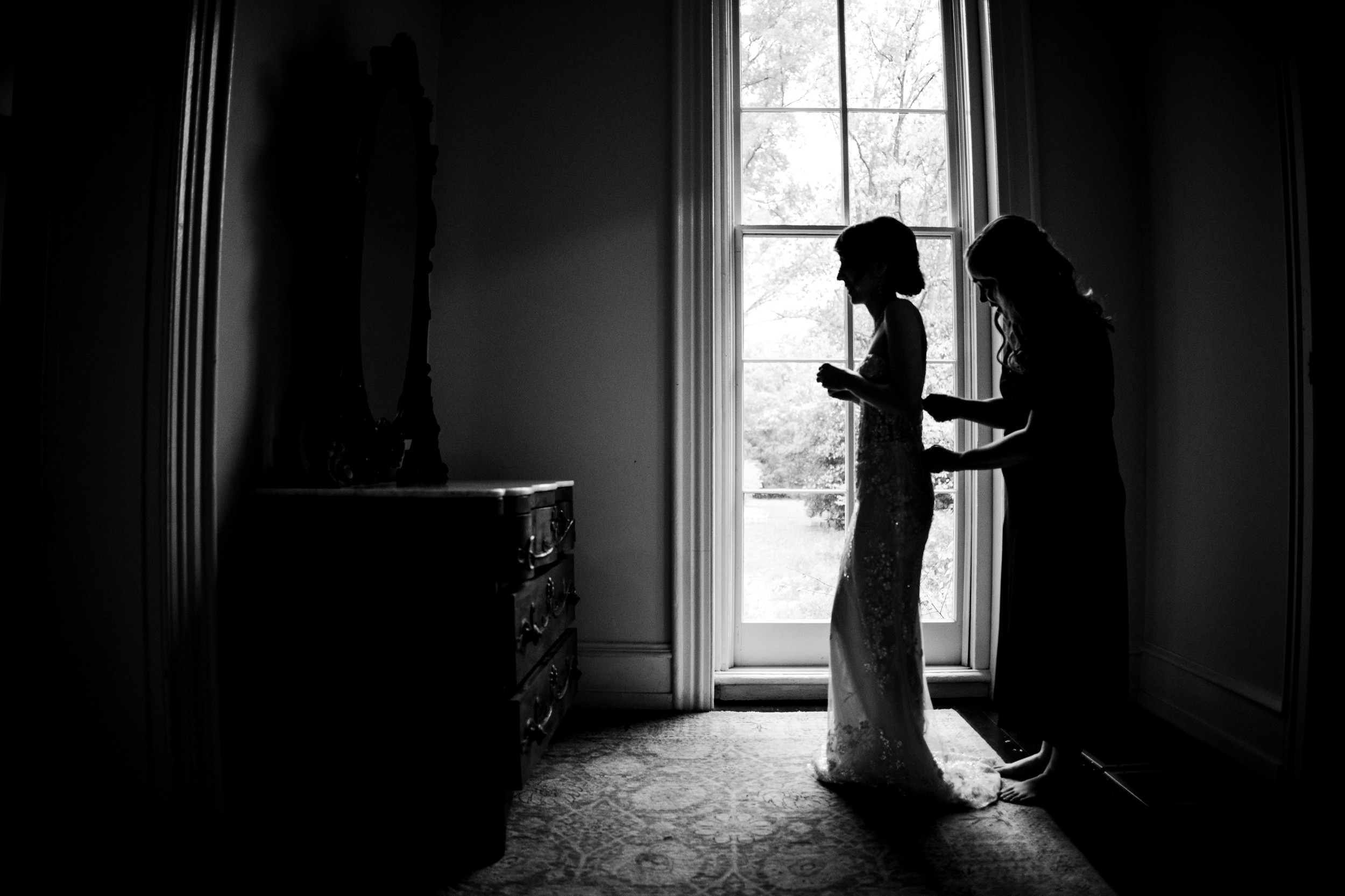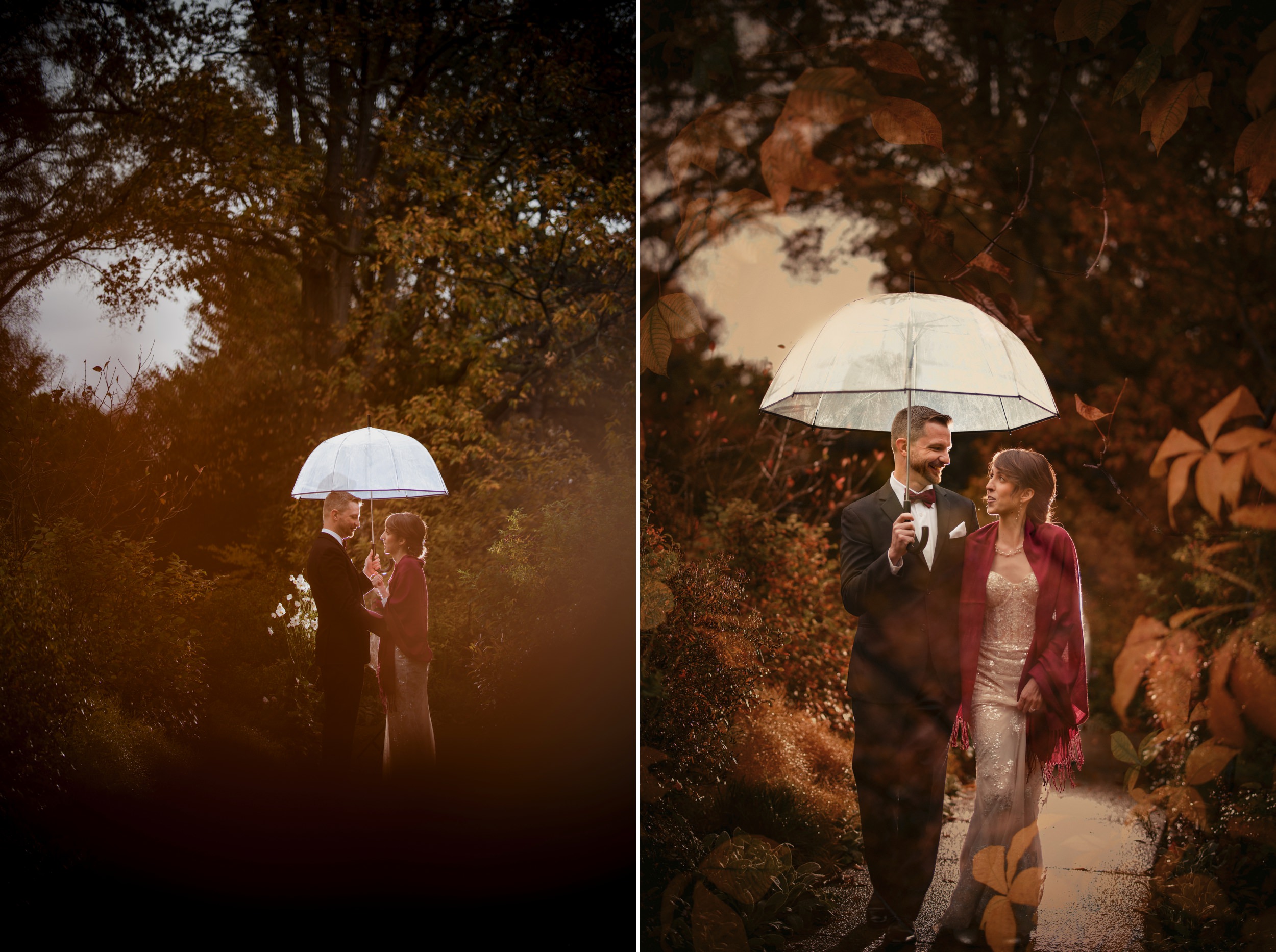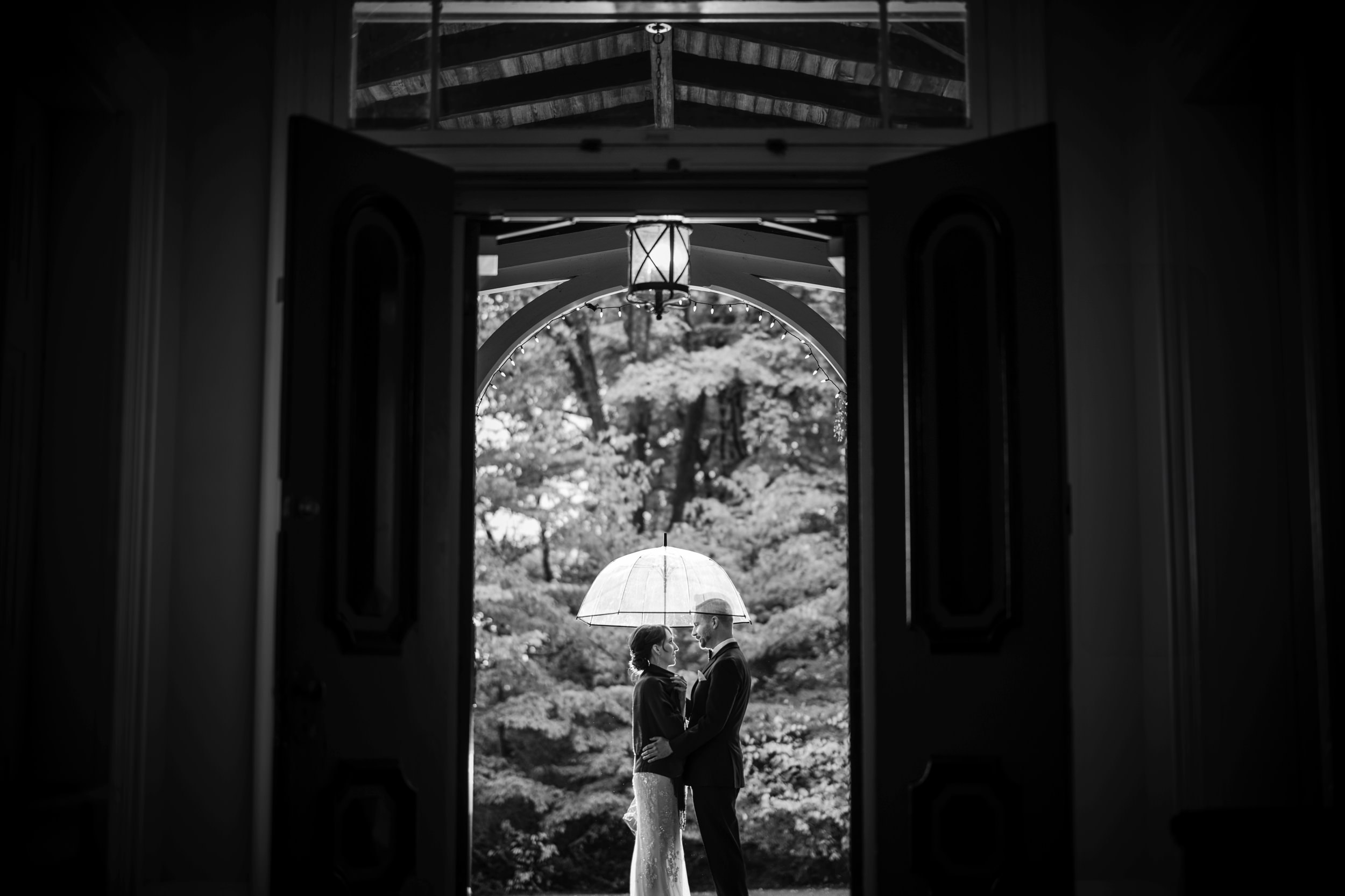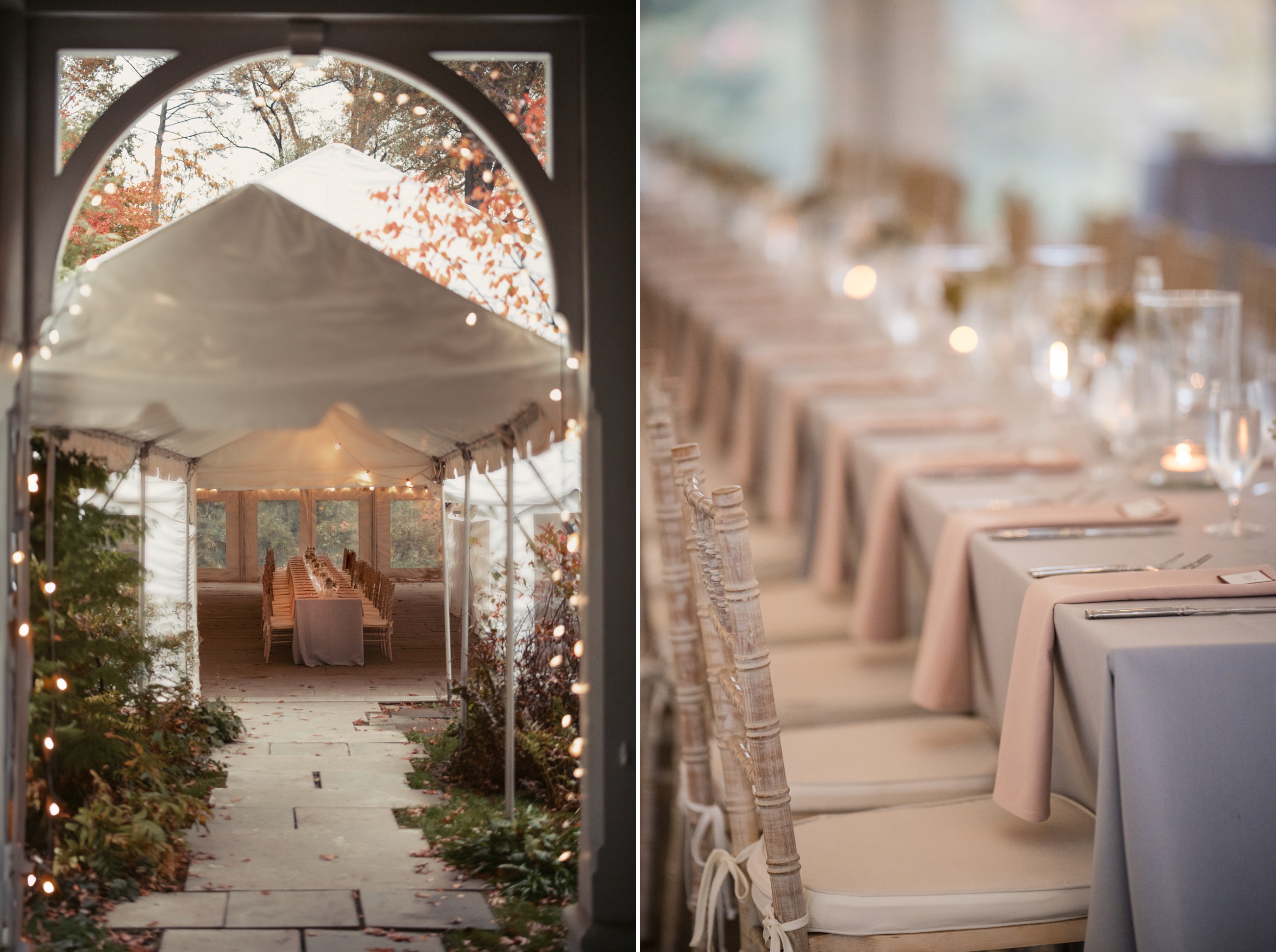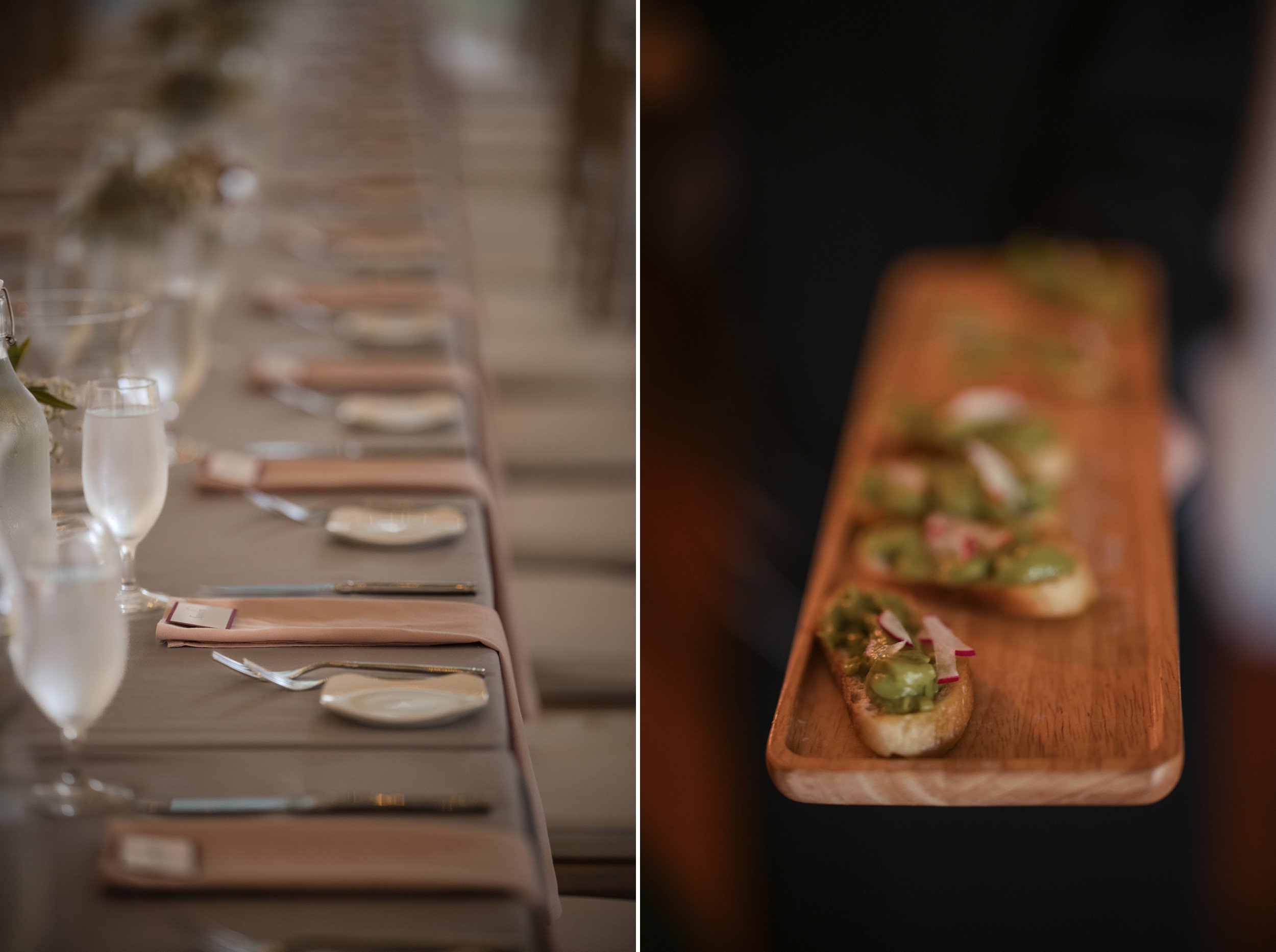This past weekend I traveled to Philadelphia for a Portico Awbury Arboretum wedding. I’ve photographed many weddings in Philly, but this was my first time at this gorgeous little hidden gem. From the dreamy dark rainy atmosphere to the late-season fall colors, this space was wonderful to photograph and suited the sweet intimacy of the wedding perfectly.
The couple got ready on the property, which added to the casual ease of the day. I love that there are two dedicated spaces for each spouse to hang out in, both are spacious and comfortable with lovely light. The ceremony was on the covered wraparound porch of the venue, and the reception was outside under Portico’s tent. I love how the venue truly is a great indoor/outdoor space. The entire day flowed really well through the venue, across the porch, and down the flagstone path into the tent.
About Awbury Arboretum
Awbury Arboretum, a verdant oasis nestled in the historic Germantown neighborhood of Philadelphia, Pennsylvania, spans approximately 55 acres of both natural woodlands and landscaped gardens. This remarkable arboretum, rooted in the Quaker principles of simplicity, beauty, and stewardship of the land, provides a serene retreat from the urban bustle, embodying both a rich historical heritage and a commitment to ecological preservation and education.
The history of Awbury Arboretum is closely intertwined with that of the Awbury Historic District, reflecting the broader story of Philadelphia and its development. Originally established in the 19th century by the Cope family, who were prominent members of the local Quaker community, the arboretum has evolved from a private estate into a public space that fosters a connection between nature and the community. The landscape design, influenced by the English pastoral aesthetic, features rolling hills, open meadows, and extensive tree plantings, which offer a tranquil and picturesque setting.
One of the defining features of Awbury Arboretum is its botanical diversity. The arboretum is home to a variety of native Pennsylvania flora, as well as historical plantings that date back to the property’s early days. These include a range of trees, shrubs, and herbaceous plants, creating a dynamic ecosystem that changes with the seasons. Notably, the arboretum’s collection of trees showcases some rare and mature specimens, making it a significant destination for both botanists and amateur nature enthusiasts.
Education and community engagement are at the heart of Awbury Arboretum’s mission. The arboretum hosts an array of educational programs, workshops, and events aimed at all ages, focusing on topics such as horticulture, environmental conservation, and natural history. These programs underscore the arboretum’s role as a living laboratory where people can learn about sustainable gardening, native plant species, and the importance of biodiversity.
Besides its educational pursuits, Awbury Arboretum is a beloved recreational space for the local community. The landscape offers numerous trails for walking, jogging, and bird watching, enabling visitors to immerse themselves in nature’s tranquility. The arboretum also plays host to various community events throughout the year, ranging from outdoor concerts and art exhibitions to seasonal festivals, further cementing its status as a communal hub.
In summary, Awbury Arboretum is more than just a collection of plants or a public park; it is a testament to Philadelphia’s rich historical tapestry and an enduring commitment to the natural world. It stands as a sanctuary for wildlife, a center for learning, and a source of inspiration and renewal for all who visit.
The Francis Cope House
The Francis Cope House, a key historical and architectural feature within Awbury Arboretum in Philadelphia, Pennsylvania, serves as an emblem of the area’s rich history and heritage. This house, originally built for Francis Cope in 1860, is a significant example of 19th-century architecture and reflects the historical context and values of the Quaker family who once lived there.
Constructed in the Victorian era, the Francis Cope House showcases the architectural styles and domestic sensibilities of that period. The house, designed with both aesthetic appeal and functional practicality in mind, stands as a testament to the Quaker ethos of simplicity, quality, and harmony with the environment. The architecture blends comfortably with the surrounding landscape, adhering to the Quakers’ appreciation for natural beauty and understated elegance.
The Cope family, for whom the house was built, were prominent figures in the local Quaker community and were instrumental in establishing Awbury Arboretum. The arboretum originally functioned as an extended landscape for the family estate, and over time, it evolved into a public space. The Cope family’s dedication to nature, education, and community welfare significantly influenced the development and ethos of the arboretum.
Today, the Francis Cope House operates not just as a historical landmark but also as a vibrant part of the Arboretum’s community and educational programming. It houses the administrative offices of Awbury Arboretum and serves as a venue for various community and private events, including meetings, weddings, and other celebrations. The house also frequently hosts exhibitions, workshops, and educational programs that align with the arboretum’s mission of promoting environmental stewardship and community engagement.
The preservation and use of the Francis Cope House highlight the ongoing commitment to honor the site’s historical significance while adapting it to contemporary community needs. As visitors explore the arboretum and its various features, the house stands as a quiet reminder of the enduring legacy of the Cope family and their vision of creating a space where the natural world and human history are intricately and beautifully intertwined.
